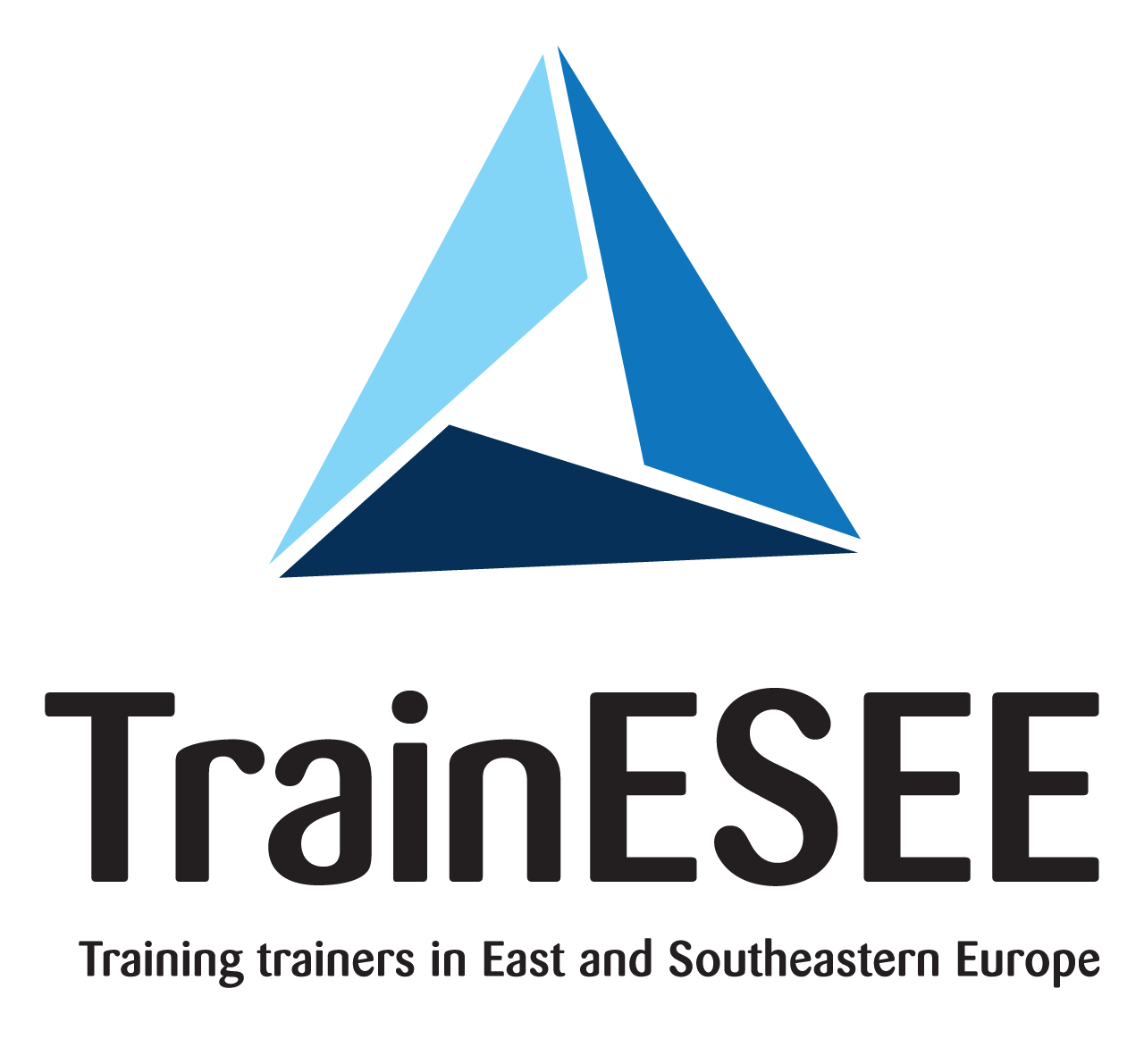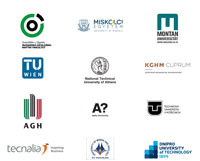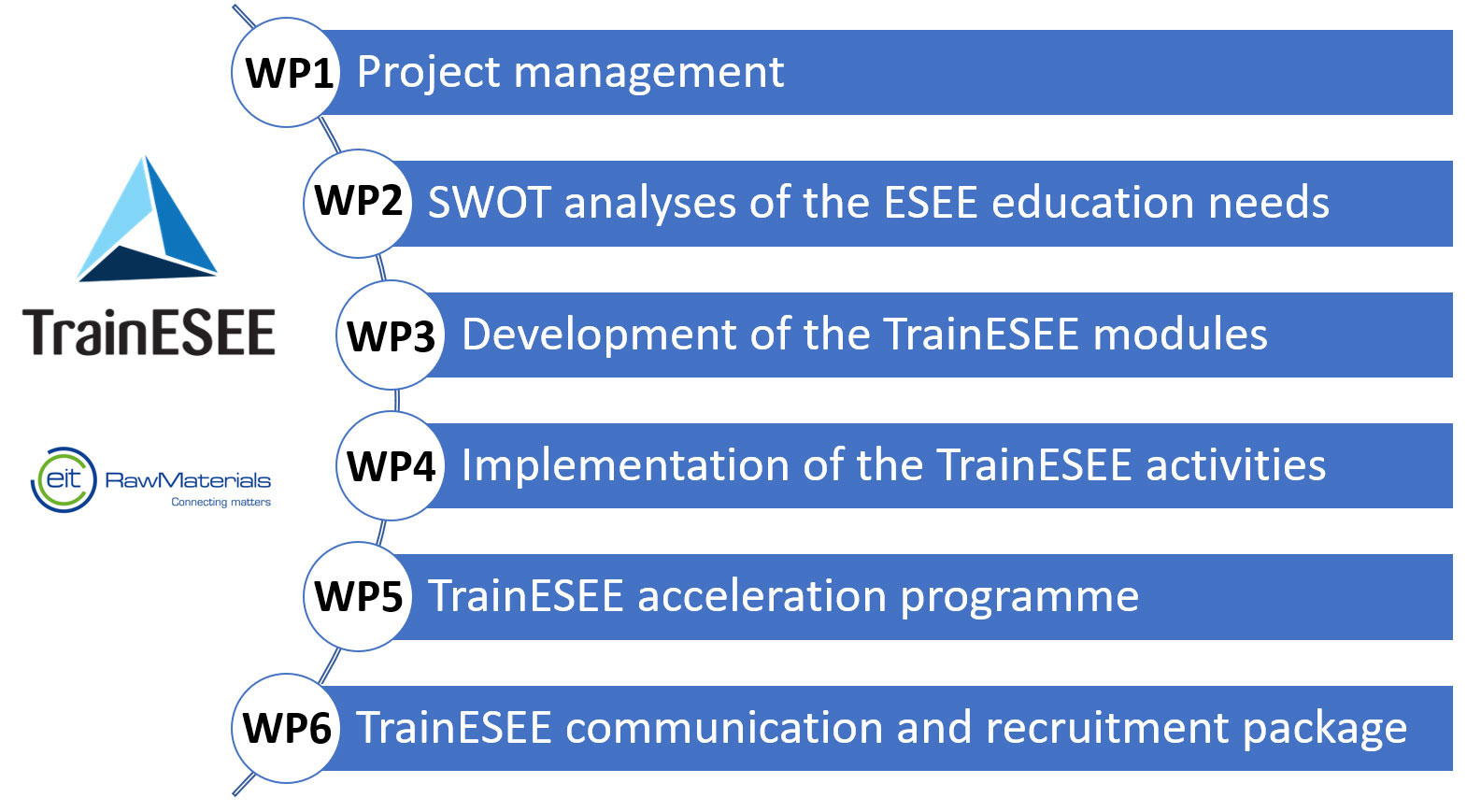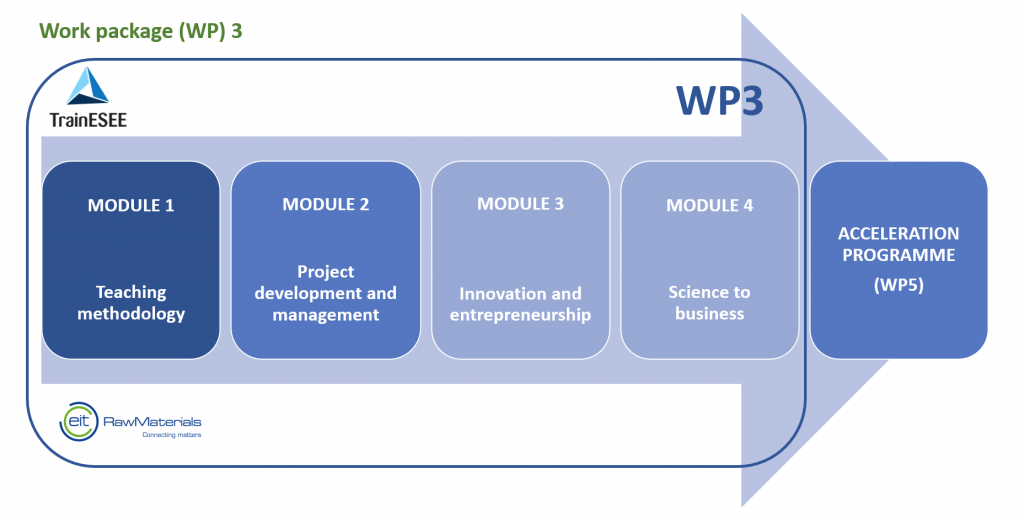TrainESEE v.2

Delivering an educational based SWOT analyses of the six universities (RM-focused) from six RIS ESEE countries. Analyses will serve for tailoring training activities within corresponding universities and will help recognizing RIS ESEE educational needs.

Development of 4 generic skills modules for RIS ESEE academic staff: Teaching methodology, Project development and management, Innovation and entrepreneurial skills and Science to Business competences.

Delivering four modular training workshops for academic staff/associates form six RIS ESEE universities.

Establishment of self-sustainable acceleration programmes at each of the six participating RIS universities. Acceleration programmes are to be run for minimum 3 years after finalization of the project.

Dissemination of the four developed TrainESEE modules for the benefit of other education stakeholders in the RIS ESEE countries.

Building a new educational collaborative network between different RIS ESEE universities, non-RIS universities and research institutes, contributing to building, training and de-siloing of the ESEE education and scientific community.
The project consists of six working packages (WPs), where packages 3, 4, and 5 make the core of the project. Through them, TrainESEE v.2 aims to implement:
(1) four tailored workshops for the academic staff of the six RIS ESEE universities, to be made available as on-line courses
(2) develop and implement six acceleration train-the-trainer programmes.
All the activities will be implemented during two full years, with packages WP2 and WP3 in 2020, and WP4 and WP5 during 2021. Work packages related to project management (WP1) and communication (WP6) will be active continuously through both years of TrainESEE v.2 implementation.
The key preparatory work for the development of modules is carried out in WP 2: SWOT analyses of the ESEE education needs. This working package includes three key tasks: SWOT questionnaire development, SWOT analyses (on the education needs of AGH, NTUA, TUKE, UM, TU Dnipro and UGM St Ivan Rilski) and activity drafting. SWOT questionnaire is developed to collect additional data and develop a viable and comprehensive SWOT analyses of the six universities.
This process is actively engaging the task leaders of WP2 and WP3, thus ensuring that all the relevant requirements for the modules are considered already in the SWOT analyses process. Activity drafting includes the definition of education activities that will be included in the Teaching methodology module (including Digital tool for teaching); Project development and management module; Innovation and entrepreneurial module and Science to Business module (including University-business cooperation).
WP3 (Development of the TrainESEE modules) includes the following tasks: analysis of the market & technology needs, Teaching methodology module development, Project development and management module development, Innovation and entrepreneurial module development and Science to Business module development. The initial market research is aimed at the optimisation of the on-line modules design in a way to ensure their commercialisation and alignment of the project with the Financial Sustainability Mechanisam requirement.
The process will involve industry partners as advisors, with a role to provide feedback on the teaching materials developed in WP3. Theei engagement will contribute to the desired level of final product quality.
Based on the modules, TrainESEE will establish self-sustainable acceleration programmes at each of the six participating RIS universities, to be run for minimum 3 years after finalization of the project.
After the end of the TrainESEE project, content of four developed modules will be on disposal for other ESEE Universities (outside TrainESEE consortium) without additional charges. Project consortium will set an application procedure for ESEE Universities in order to monitor post-project impact.
The three-year acceleration programmes will be built into the existing structures of the ESEE universities, respecting country specifics. Related to this, the TrainESEE v.2 project will:
- outline steps for supporting mobilities of the incoming professors – external lecturers at in-house acceleration programmes
- prepare, distribute and discuss memorandum of understanding ensuring commitment and support in implementation of the acceleration programme within “Training” universities
- outline steps for supporting involvement of in-country industry partners providing case-studies, project ideas, best-practice examples etc.
up to 24% of the trained academic staff at the “training” universities
up to 12% of improved RM-related courses
up to 6% of students benefitting from the improved RM-related courses
up to 12% increase in the number of project submissions











